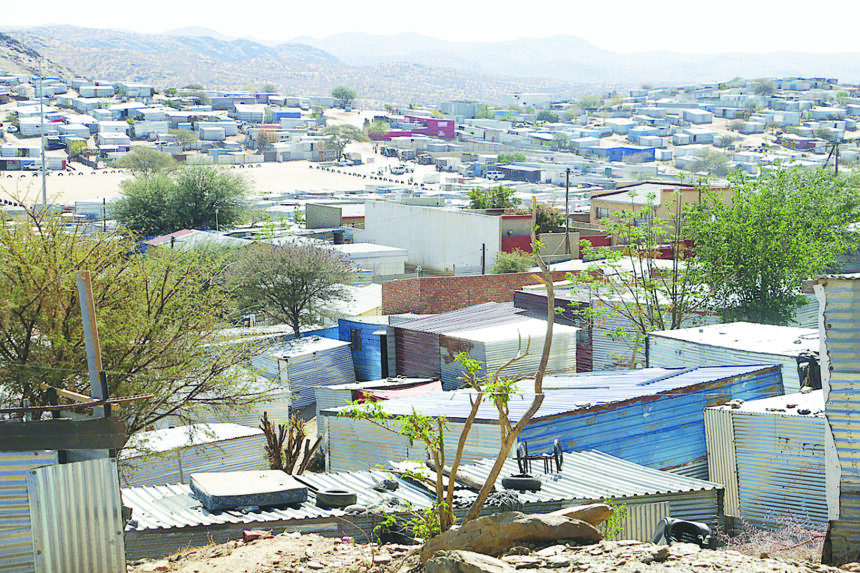The Khomas and Omaheke regions have the highest number of shacks in Namibia, with 46.9% of Windhoek residents staying in makeshift dwellings, while a mammoth 46.8% of Omaheke inhabitants currently live in shacks.
These figures are contained in the 2023 Population and Housing Census Main Report, which shows that 28.7% of Namibian households live in informal dwellings or shacks, of which 40.2% are in urban areas.
The report’s regional figures indicate that the Khomas, Omaheke and Otjozondjupa (40.1%) regions have the highest number of shacks, while Omusati (8.2%), Zambezi (11.0%) and Ohangwena (11.3%) have the least number of informal dwellings.
In terms of categorisation, the report defined 11 categories of housing units, which are formal dwellings/houses with brick or concrete structures on separate stands or farms; traditional dwellings made of traditional materials; flats or apartments in blocks of flats; and cluster houses in complexes.
It also included townhouses (semi-detached houses in complexes), semi-detached houses, formal dwellings or additional units in backyards, informal dwellings/shacks in backyards, informal dwellings/shacks not in backyards (such as in informal/squatter settlements or on farms), caravans/tents, and single quarters.
The report furthermore touched on the average number of people per sleeping room and per occupancy countrywide, and shows the average number of persons per sleeping room in Namibia is 1.5, which suggests most households were not overcrowded. However, at regional level, the Zambezi region recorded 2.2 persons per room, while Kunene has 2.1 persons per sleeping room. The lowest average number of people per sleeping room was in Omusati and Oshana, with 1.2 persons each.
Overall, the census report covered a total of 756 339 private households [conventional households] countrywide, which indicates an increase from 49.3% recorded in urban areas in 2011 to 54.8% in 2023. A large chunk of Namibia’s urban population lives in shacks, mainly due to a lack of affordable land and housing.
Half of all shack dwellers have no access to decent sanitation facilities, and therefore practice open defecation. Every year, an additional 12 000 shacks are being erected in towns across the country.
Rapidly-expanding informal settlements pose a series of challenges and make it difficult for local authorities to provide land servicing, connect water and sewer lines, as well as provide access roads.
Additionally, residents do not have title deeds for the land they live on, and are therefore not allowed to build permanent homes as they have very little tenure security. National growth over the past two decades largely occurred in towns and cities.
Between 1991 and 2011, most Namibian towns achieved an annual growth rate of more than 4%, although some urban centres like Oshakati grew at an average of 7% per year.
Projections
It is widely projected that 13 years from now, about two million Namibians will be living in shacks. It is also projected that the number of urban homes in 2030 will be about 3.5 times more than all the rural homes. These projections are based on the assumption that growth will persist at the rates recorded between the last two censuses. Based on current experience and past trends, the number of urban shacks grew each year by 11.2% between 1991 and 2001, and by 10.1% between 2001 and 2011.
Urban formal housing grew at 3.7% each year between 1991 and 2001, and by 4.4% from 2001 to 2011. These figures indicate that an estimated 21 632 urban homes were built between 2016 and 2017, while 12 712 units were shacks and 8 911 were formal structures. -ohembapu@nepc.com.na


